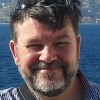 One of the Coalition's four planks in this election is to 'stop the boats'. Their policy also states that the temporary protection visa system will be introduced as well as offshore processing in Nauru. The Labor policy does not go as far but does propose a regional offshore processing centre, maybe in East Timor.
One of the Coalition's four planks in this election is to 'stop the boats'. Their policy also states that the temporary protection visa system will be introduced as well as offshore processing in Nauru. The Labor policy does not go as far but does propose a regional offshore processing centre, maybe in East Timor.
Both major parties propose to keep the refugee and humanitarian program at 13,750 places, of which 6500 are for refugees recommended by UNHCR. The balance of the program is for humanitarian cases, mainly immediate family members of refugees and onshore protection cases.
All those who are accepted as refugees are individually assessed by migration officers, whether offshore or onshore. So whether 5000 refugees come from UNHCR cases or arrive on boats or by planes and are then assessed as refugees, you still have 5000 refugees.
But the debate does not focus on how many refugees we ought to take, but on who are the 'good refugees' and who are the 'bad refugees'. According to the Coalition, 'bad refugees' are those who come on boats and then seek asylum. They take places that could otherwise go to the 'good refugees' who wait patiently in camps.
This dichotomy underlies the myth of a
'queue', and so pits different groups of refugees against each other. The reality is more complex.
For refugees, there are three possible solutions. First, people should be able to return home and live safely. If that is not possible, then the second option is integration in the country to which they initially fled. The third and least used option is third country resettlement.
The UNHCR estimates there are around 12 million refugees in the world. Less than 100,000 (under one per cent) will be resettled in third countries. An estimated 25 million people are also internally displaced. Few if any of these people will have access to third country resettlement.
To claim there is a queue of people seekeing asylum does not respect the reality of refugee movements. It is ludicrous.
Historically, refugees have tended to live in camps near the borders of the country from which they fled. Since 1945, the oldest unsolved group of refugees comprises the Palestinians who have now lived for nearly two generations in camps in the Middle East. Yet they are rarely considered for third country resettlement.
In the last 20 years, more refugees live in urban centres than previously. Iraq, for example, was a very developed country with a significant middle class and significant minority populations. Many of the tertiary educated professionals who fled Iraq since 2003 are living in Syria, Jordan, the United Arab Emirates and other countries in the region. A significant number are Sunni or Christian.
The Iraqi refugees include medical professionals, IT specialists and engineers who have temporary work in the UAE. When that finishes, they need protection elsewhere as it is too dangerous to return to Iraq. Others live off their savings in Syria. Some use their resources to get to countries of resettlement and then claim asylum.
UNHCR identified such professionals as being at high risk in Iraq in April 2009 and this assessment was confirmed in July 2010. They do not fit the stereotype of a 'poor refugee in a camp', but they meet the refugee definition because poverty is not a requirement for refugee status.
It is estimated there are around one million Iraqis in Jordan and Syria and a further 1.5 million internally displaced in Iraq. There are no Iraqi camps as such in Jordan and Syria, but the Iraqis are spread throughout the suburbs of Damascus and Amman.
The experience of these Iraqis is different to that of older refugee communities, such as Afghans, Cambodians, Sudanese and other African communities put in refugee camps. There are still major Afghan refugee camps in Pakistan but more and more Afghans are now living in cities such as Peshawar or Quetta rather than in camps.
More recently some Afghans fled directly from Afghanistan or from the camps to seek a solution themselves rather than waiting for the refugee 'resettlement lotto' in camps.
In developing a contemporary policy for refugee resettlement, these variations in types of refugee need to be considered. Some flee to camps and remain there waiting to see if a return home is possible. Others seek resettlement through the UNHCR. Others flee to a Refugee Convention signatory country to seek asylum.
Sadly human rights abuses will continue and therefore there will be more refugees. The current debate rarely considers those who are forced to move for environmental reasons because their cases do not fit the narrow refugee definition, but the next two decades are likely to see more of such cases.
We need to work collectively with other countries and international organisations. We cannot expect to remain forever isolated from the large numbers of people moving around the planet. A modern approach to refugee resettlement will reflect these different movements without pitting groups against each other.
 Kerry Murphy is a partner with the specialist immigration law firm D'Ambra Murphy Lawyers. He is a student of Arabic, former Jesuit Refugee Service coordinator, teaches at ANU and is one of Australia's top immigration lawyers as recognised the Australian Financial Review Best Lawyers survey in 2009 and 2010.
Kerry Murphy is a partner with the specialist immigration law firm D'Ambra Murphy Lawyers. He is a student of Arabic, former Jesuit Refugee Service coordinator, teaches at ANU and is one of Australia's top immigration lawyers as recognised the Australian Financial Review Best Lawyers survey in 2009 and 2010.